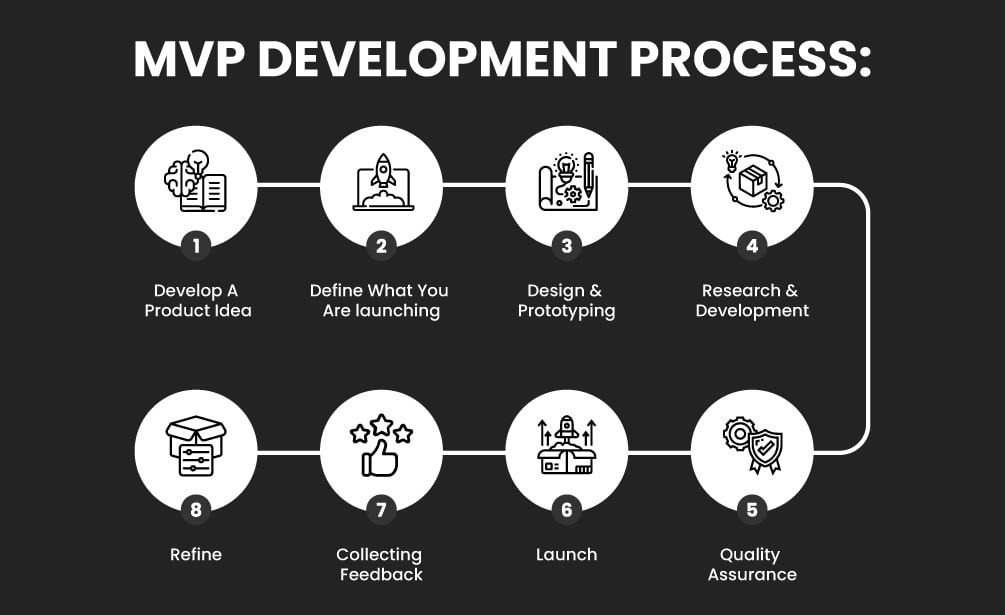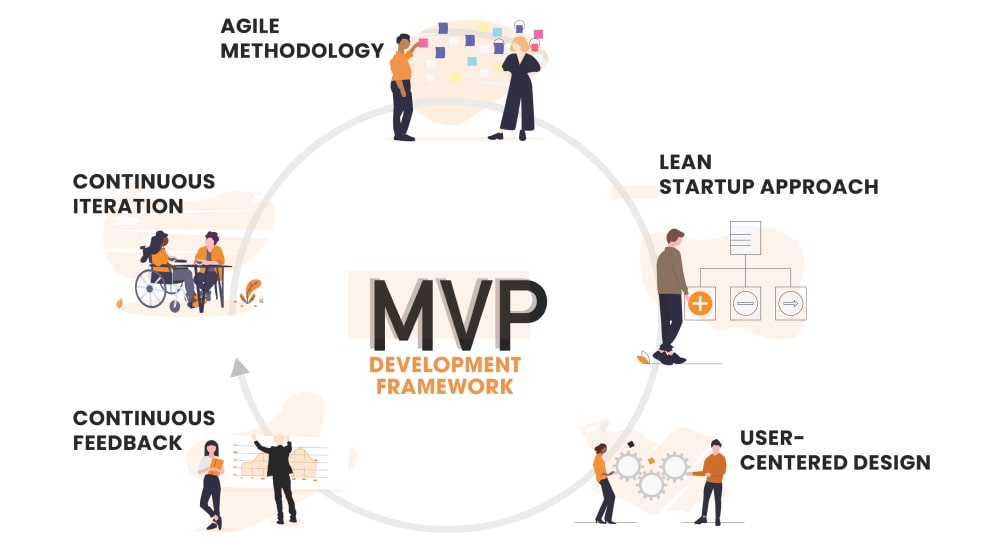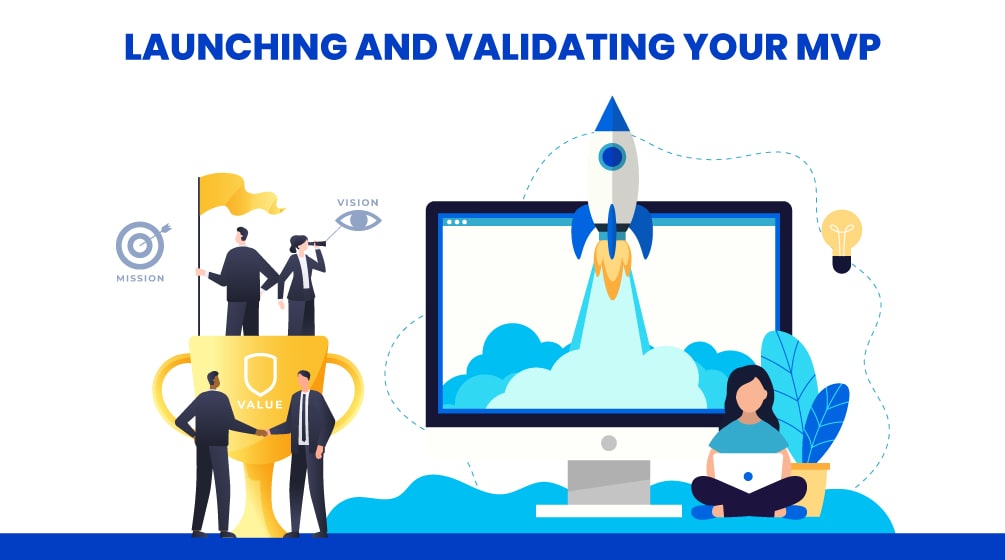1. What is a Minimum Viable Product?
A Minimum Viable Product (MVP) is a basic version of your product with its main features. It helps you gather user feedback, test assumptions, and improve your idea. By focusing on essential functionalities, an MVP allows you to launch quickly, minimize development costs, and gather valuable insights from early adopters.
2. The Importance of MVP in Software Development
3. The MVP Development Process

- Idea Generation and Market Research
- Define Your MVP Goals and Metrics
- Prioritize Core Features
Identify the core features that align with your MVP goals. Focus on the features that are most important for users to understand and use your product. By prioritizing these features, you can streamline development and launch a functional MVP quickly.
- Build and Test the MVP
4. MVP Developers and Development Companies
Choosing the right MVP developers is crucial for the success of your project. Look for experienced developers who understand the MVP Development Process and have a track record of delivering quality solutions. Research MVP Development Companies and consider their expertise, portfolio, and client reviews before making a decision. Collaborating with the right team will ensure that your MVP is developed efficiently and effectively.
5. The MVP Development Framework

- Agile Methodology
- Lean Startup Approach
- User-Centered Design
- Continuous Feedback and Iteration
6. Launching and Validating Your MVP

- Prepare for Launch
- Gather User Feedback
- Measure Key Metrics
- Iterate and Pivot
